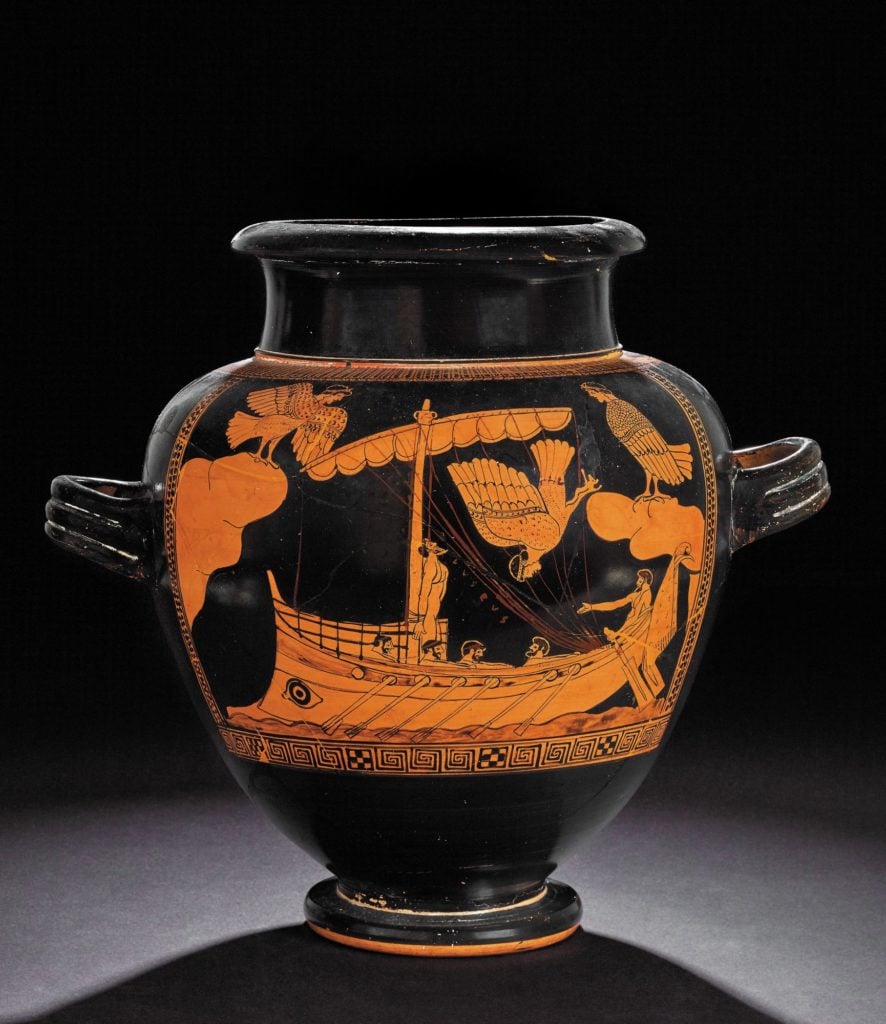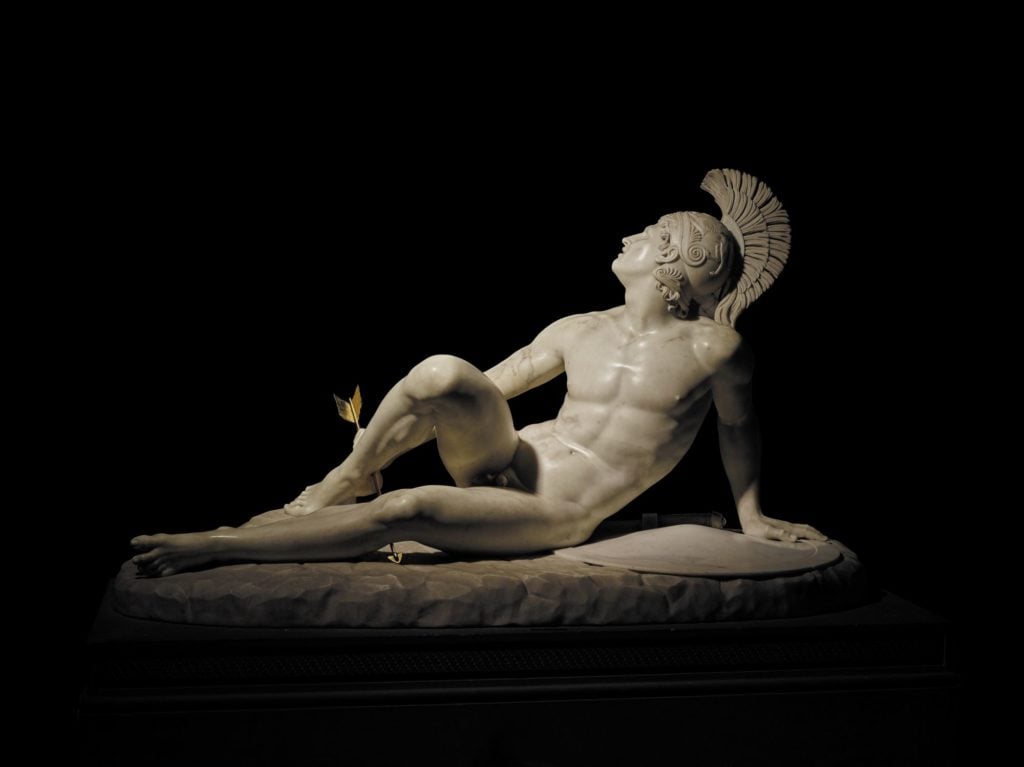Politics
As Museums Ditch Controversial Donors, Climate Activists Are Eyeing a BP-Sponsored Blockbuster Coming to the British Museum
The "BP Exhibition" about the Trojan Wars will open in November.

The "BP Exhibition" about the Trojan Wars will open in November.

Javier Pes

The protest group BP or not BP? has denounced the oil giant’s sponsorship of the British Museum’s next blockbuster exhibition “Troy: Myth and Reality.” Branded a “BP exhibition,” it is the latest in a series of high-profile archaeological shows supported by the company—and criticized by protesters.
The exhibition, which will tell the story of the Trojan Wars and include archaeological finds from the ancient city, is due to open in November. BP’s ongoing sponsorship is increasingly controversial as the momentum behind climate-change activism grows, increasing pressure on arts institutions to reject money from fossil-fuel companies. The Tate is among the institutions that no longer work with BP, and last summer Amsterdam’s Van Gogh Museum ended its partnership with Shell by “mutual” agreement.
Hundreds demonstrated at the British Museum to protest the BP-sponsored Assyrian exhibition in February. Meanwhile, the group Extinction Rebellion is planning to stage its next action on the doorstep of the Natural History Museum in London tomorrow. The protest “picnic” coincides with a major social event in the petroleum industry calendar, the Petroleum Group’s annual dinner, which is being hosted by the museum.
The director of the British Museum, Hartwig Fischer, said in a statement that without BP’s ongoing support “important exhibitions such as these would simply not be possible.” At the museum’s press conference yesterday, Peter Mather, BP’s regional president for Europe, said the company shared protesters’ concerns.
But the warm words cut no ice with BP or not BP? A spokesman for the group tells artnet News: “The British Museum seems to have no sense of irony. The exhibition is a Trojan Horse for BP.” He added that the campaign group had plenty of time to plan “something” before the exhibition opens in the fall. In the past, the group has smuggled a giant octopus, a Viking ship, and banners onto museum grounds as part of its creative protests against BP-sponsored exhibitions at the museum.

Filippo Albacini (1777-1858), The Wounded Achilles (1825). Photo: © The Devonshire Collections, Chatsworth. Reproduced by permission of Chatsworth Settlement Trustees.
The Troy exhibition will include star loans from Berlin State Museums, including finds made in the late 19th century by the German businessman turned archaeologist Heinrich Schliemann, who excavated the site, which is in modern-day Turkey, starting in 1871, initially without permission. His offer to sell his collection to the British Museum, including the trove of gold called Priam’s Treasure, was rejected as too costly 150 years ago.
Much of the treasure is now in the Pushkin State Museum in Moscow after it was seized in Berlin at the end of World War II by the Red Army as reparation for Russia’s lost heritage. When the treasure reemerged in the 1990s, Germany formally requested its return. The British Museum has not requested any of the politically sensitive Trojan gold from Russia.
Instead, the British Museum is borrowing pottery and silver vessels, bronze weapons, and stone sculptures that remained in Berlin. Other star loans include a silver cup featuring King Priam and Achilles from the National Museum of Denmark. The Duke of Devonshire is lending Filippo Albacini’s marble sculpture The Wounded Achilles (1825) from his stately home, Chatsworth House, its golden arrow newly conserved.
As the exhibition is focusing on Schliemann’s excavations, which caused a sensation when first shown in Europe, a spokeswoman for the British Museum says that it has not requested any loans from Turkish institutions. The Metropolitan Museum of Art in New York also avoided potentially awkward negotiations with Turkey for its 2016 exhibition on Pergamon, another ancient site excavated by a German in the 19th century.
The British Museum is borrowing a contemporary work with a strong feminist message to represent Helen of Troy, a legendary beauty whose abduction caused the Trojan Wars, according to Homer and other classical writers. It will show a work by the veteran US artist Eleanor Antin, who in 2007 created the photographic series “Helen’s Odyssey.” Speaking of the staging the photographs to ART21, Antin said: “You can’t deal with the beautiful if you just don’t know how absurd it is and how dark it is underneath—how mortal it is. It’s got pathos because of its mortality.”
“Troy: Myth and Reality” will run November 21, 2019-March 8, 2020, at the British Museum, London.